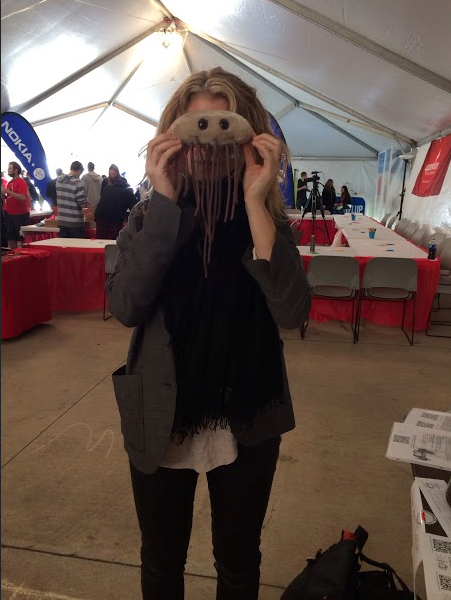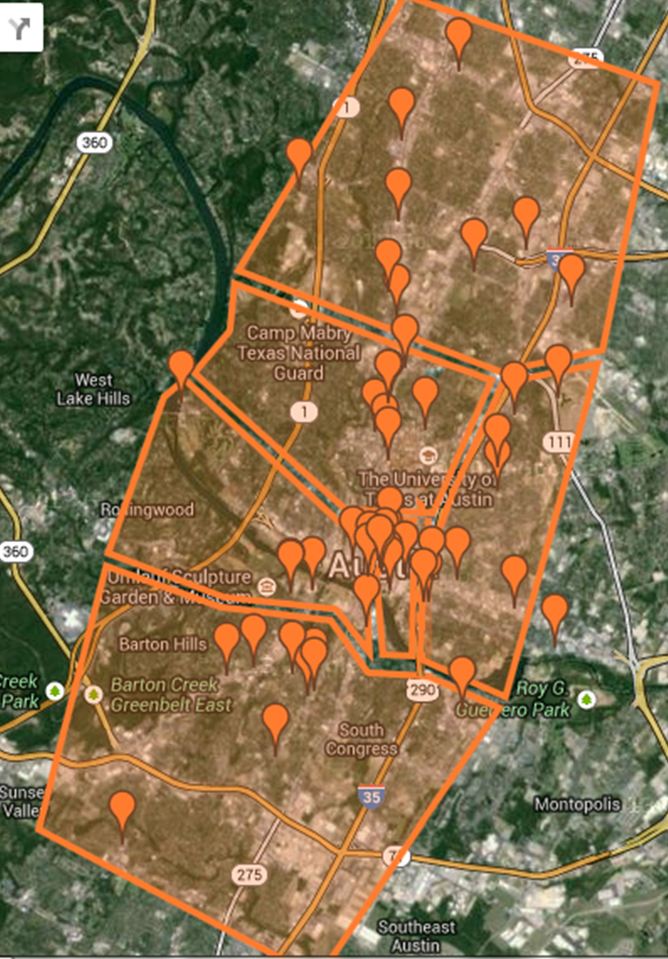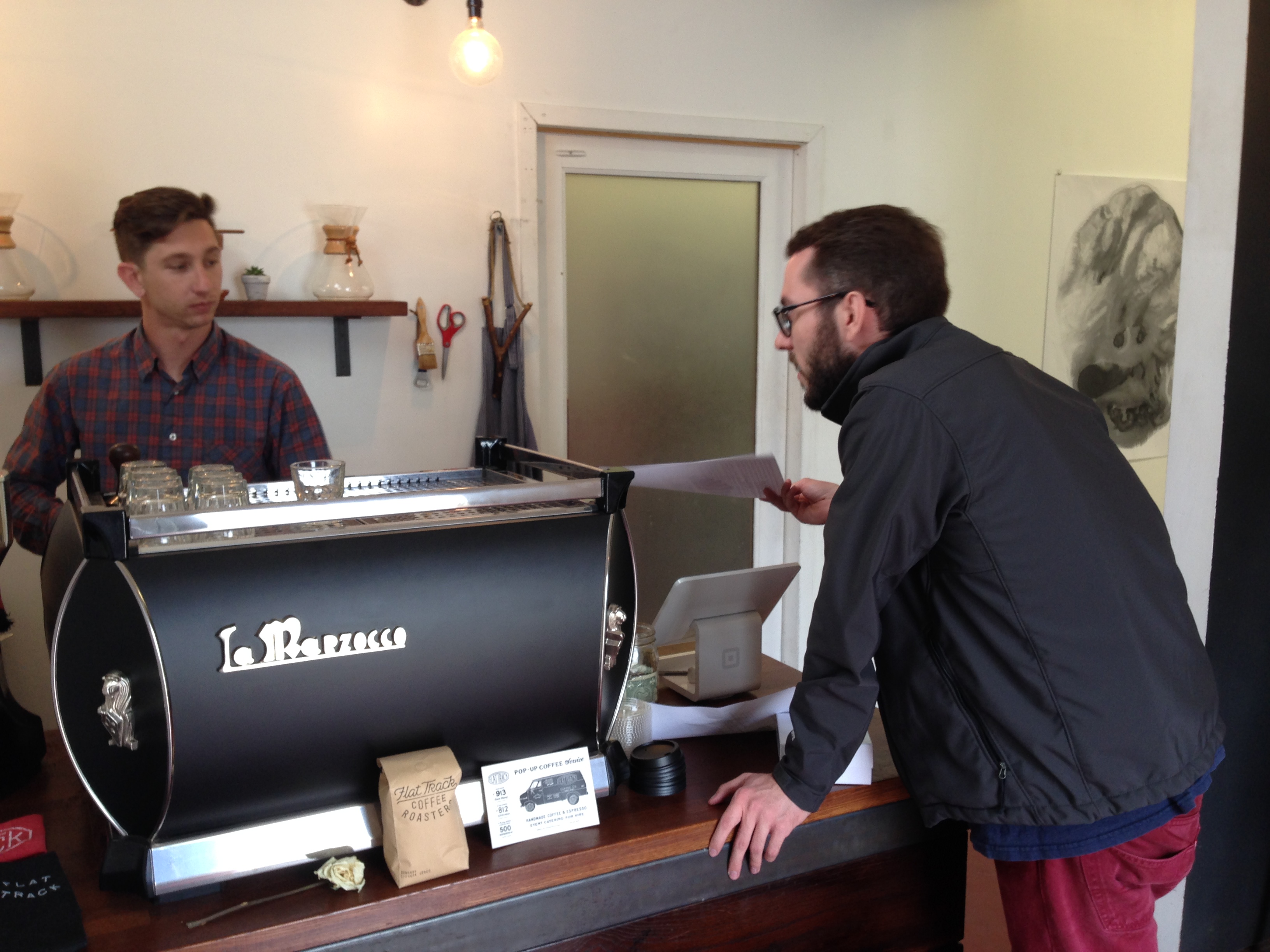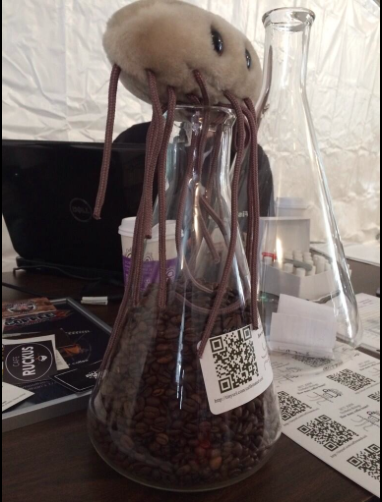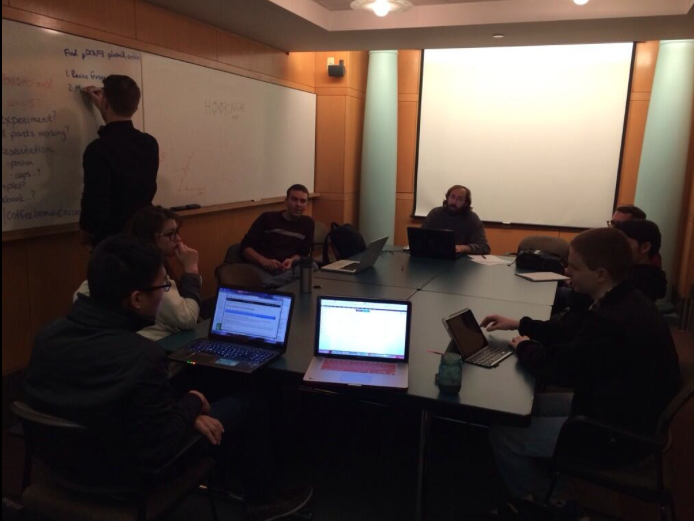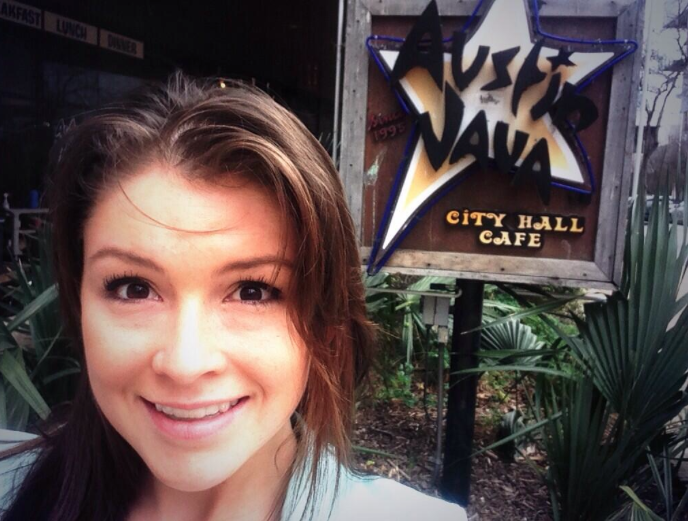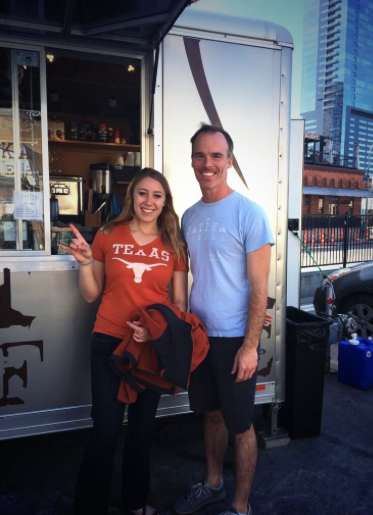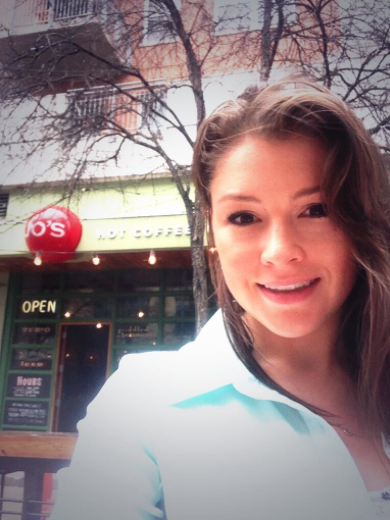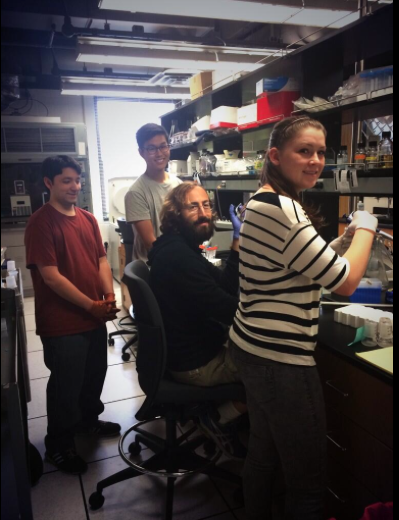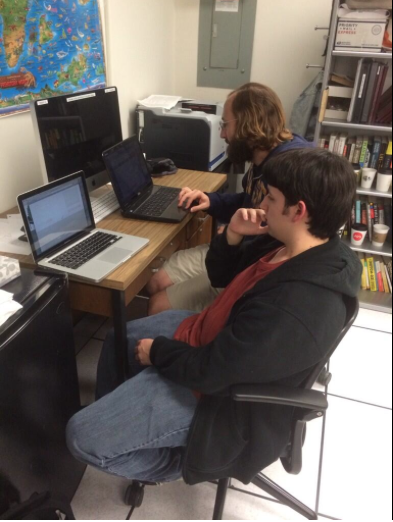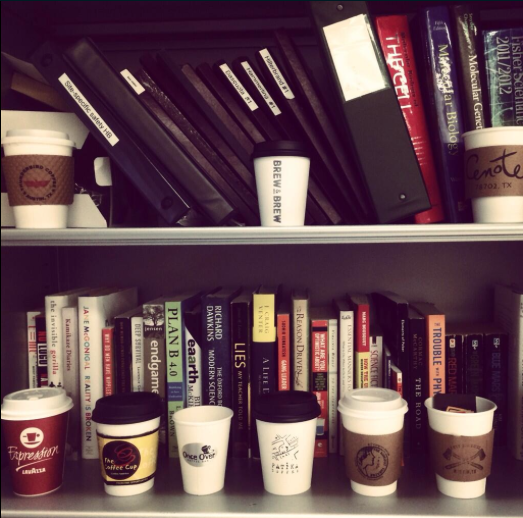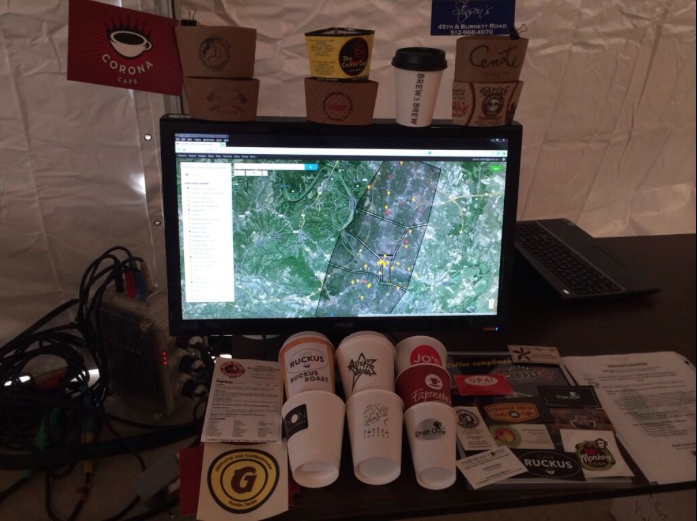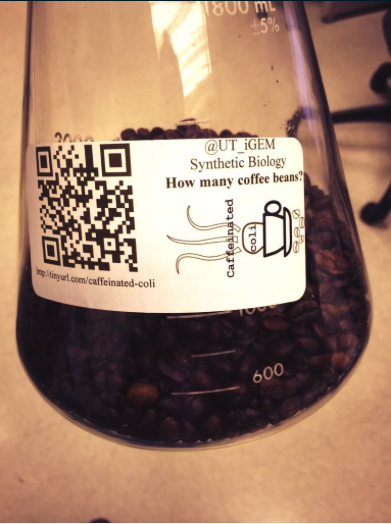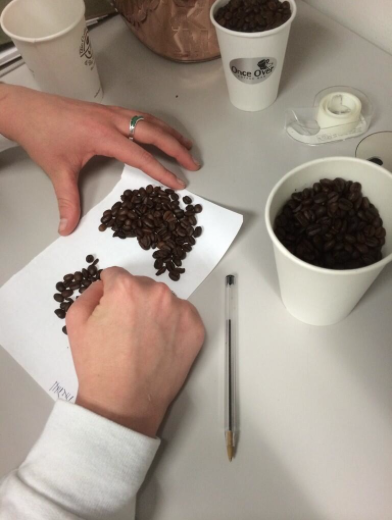Team:Austin Texas/human practices
From 2014.igem.org
(→SXSW Create) |
(→Presenting the Science) |
||
| Line 122: | Line 122: | ||
In March 2014, we presented this data set at the SXSW festival. As part of this outreach, we explained our project and synthetic biology to a wide range of people. Many people who came by had little to no background in science or technology, and even most of the ones who did did not have a thorough understanding of what synthetic biology was or how it could be helpful. By discussing our experiments with bacteria and coffee, an interesting and easy-to-understand application, we were able to explain the basic concepts of synthetic biology and how it can be used in a beneficial way. Occasionally, these conversations would branch out into wider topics of science and technology. | In March 2014, we presented this data set at the SXSW festival. As part of this outreach, we explained our project and synthetic biology to a wide range of people. Many people who came by had little to no background in science or technology, and even most of the ones who did did not have a thorough understanding of what synthetic biology was or how it could be helpful. By discussing our experiments with bacteria and coffee, an interesting and easy-to-understand application, we were able to explain the basic concepts of synthetic biology and how it can be used in a beneficial way. Occasionally, these conversations would branch out into wider topics of science and technology. | ||
| - | + | ==Community Response== | |
[[file:SXSWcreatetable.JPG|left|400px|thumb| Table at SXSW]] | [[file:SXSWcreatetable.JPG|left|400px|thumb| Table at SXSW]] | ||
| Line 130: | Line 130: | ||
Despite the insignificant difference, there were many hypothesis presented by passing by patrons about why the light roast in our experimet had seemingly more caffeine than the dark roast. Some people claimed that longer roasting destroyed the caffeine (and swore by cold-press coffee!), and some people guessed that perhaps the dark roast sample had less coffee beans in it when it was brewed. Nevertheless, after much research by the team after the event, it was concluded that [http://en.wikipedia.org/wiki/Coffee_roasting coffee roasting] and [http://en.wikipedia.org/wiki/Coffee_preparation#Brewing coffee brewing] are largely variable processes, and caffeine content can vary significantly from batch to batch of beans. For more information about light roast vs. dark roast see this article at [http://www.scribblerscoffee.com/coffees_caffeine.htm Scribblers Coffee], which discusses the nuances between the two! | Despite the insignificant difference, there were many hypothesis presented by passing by patrons about why the light roast in our experimet had seemingly more caffeine than the dark roast. Some people claimed that longer roasting destroyed the caffeine (and swore by cold-press coffee!), and some people guessed that perhaps the dark roast sample had less coffee beans in it when it was brewed. Nevertheless, after much research by the team after the event, it was concluded that [http://en.wikipedia.org/wiki/Coffee_roasting coffee roasting] and [http://en.wikipedia.org/wiki/Coffee_preparation#Brewing coffee brewing] are largely variable processes, and caffeine content can vary significantly from batch to batch of beans. For more information about light roast vs. dark roast see this article at [http://www.scribblerscoffee.com/coffees_caffeine.htm Scribblers Coffee], which discusses the nuances between the two! | ||
| - | + | ||
[[file:e.coliplush.png|thumb|right| Coffee bean counting contest]] | [[file:e.coliplush.png|thumb|right| Coffee bean counting contest]] | ||
People were also extremely curious as to why the Wright Bros. Brew & Brew sample had a significantly higher amount of caffeine. This data point resulted in one of the owners of Wright Bros. Brew & Brew contacting us, to understand our process of determining caffeine content and why they were so far outside the mean. The owner, Matt Wright, concluded, after discussing our project and the coffee brewing process (and consulting with employees), that the specific pot of coffee was probably just not fully drained, i.e. there was less water in the batch than normal, resulting in a higher caffeine/volume content. This was just a starting point though as the conversation with Mr. Wright spanned the entire process of making coffee, quality control, and a little bit of the science behind the process. It also developed a nice contact point for a future continuation of science and coffee. | People were also extremely curious as to why the Wright Bros. Brew & Brew sample had a significantly higher amount of caffeine. This data point resulted in one of the owners of Wright Bros. Brew & Brew contacting us, to understand our process of determining caffeine content and why they were so far outside the mean. The owner, Matt Wright, concluded, after discussing our project and the coffee brewing process (and consulting with employees), that the specific pot of coffee was probably just not fully drained, i.e. there was less water in the batch than normal, resulting in a higher caffeine/volume content. This was just a starting point though as the conversation with Mr. Wright spanned the entire process of making coffee, quality control, and a little bit of the science behind the process. It also developed a nice contact point for a future continuation of science and coffee. | ||
Revision as of 01:42, 17 October 2014
| |||||||||||||||||||||||||||||
 "
"

